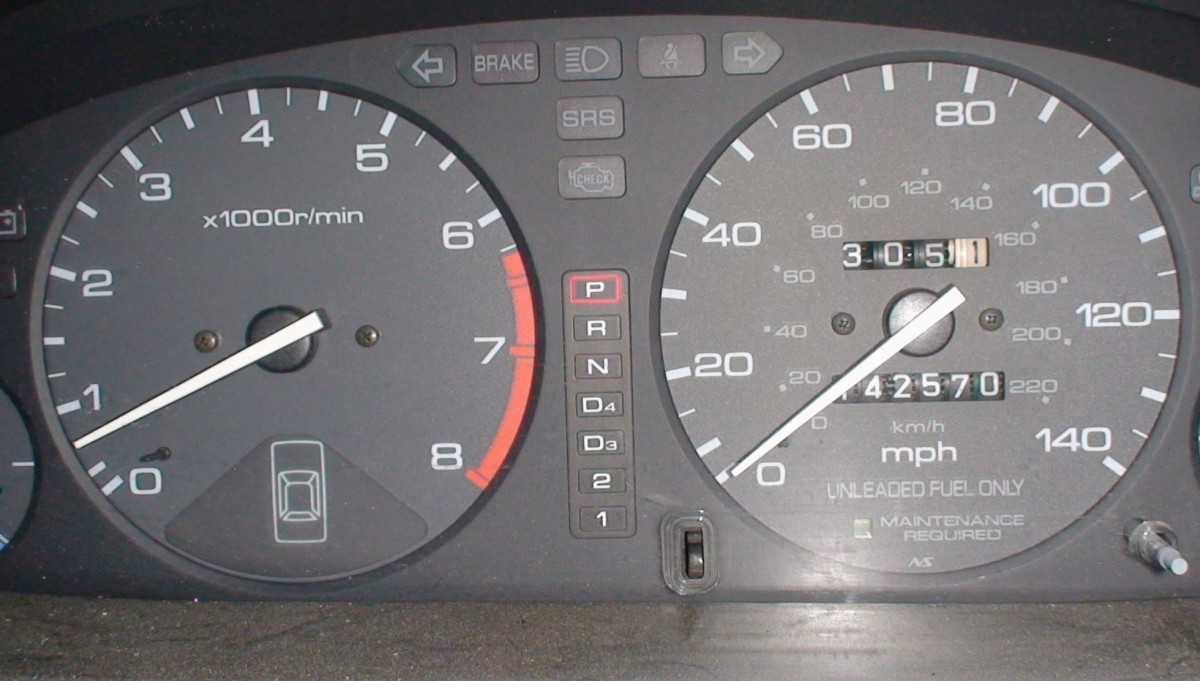- Get link
- X
- Other Apps
- Get link
- X
- Other Apps
To measure a vehicle's speed, the rotational speed of the wheels or (power to the wheels) transmission must be measured and that information sent to some form of gauge. In most vehicles, the measurement takes place in the transmission. And the task of measuring the rotational speed generated by the transmission is done by the drive cable.
The drive cable consists of a number of helical coils wrapped around a central wire. Therefore, the drive cable is very flexible and can be bent without breaking. This is done because the speedometer has to be moved. It is connected to a set of gears in the transmission. This communicates the rotational speed of the transmission along the cable to the speedometer. Speed measurement is actually done.
The drive cable connects to a permanent magnet through a spiral gear. The magnet is held in a cup-shaped piece of metal called a speedcup (metal drum). The speedcup is attached to a metal rod. The speedometer face displays a range of numbers from zero to the upper limit.
Now let's see how this relatively simple device actually measures vehicle speed.
This drive cable attached to the wheel also rotates as the vehicle moves. The force generated by the rotation of the cable moves the speedometer to the end. The drive cable is not firmly attached to the meter. Power is directed to the permanent magnet inside the meter, maintaining a fine gap. Here the operation of the magnet starts with the rotation of the drive cable. As the magnet rotates, it sets up a rotating magnetic field, creating forces that act on the speedcup. These forces cause an electric current to flow inside the cup, called eddy currents. With this action of the magnet, the speed of the vehicle is displayed in the speedometer.
The other process that occurs at the same time is farsightedness. This is done by a small gear system driven through the action of the magnet. The values of this index are used to calculate the distance traveled by a vehicle and other calculations.
Since the speedometer measures the rotation of the gears in the wheels, it is a relatively simple matter to use this information to determine how far the vehicle has traveled. This is why the milometer (often called an odometer) is built into the speedometer. The odometer works by a small gear that is connected to an internal cable that comes up to the speedometer. This gear drives a series of separate numbered rotating gears from 0 to 9. The gears are arranged so that each number clicks after the correct distance, and when number 9 is reached, the number to its left is advanced by 1. Some cars have 2 milometers. It is milo meter s. If not, it is called a trip meter. This is fitted to measure the distance to the driver, which can be reset via a control at the start of the journey. The other odometer cannot be reset to ensure it measures the number of miles the car has traveled in its lifetime, or at least until it has 'run around the clock' (usually 100,000 miles). All vehicles have second type odometers.


Comments
Post a Comment